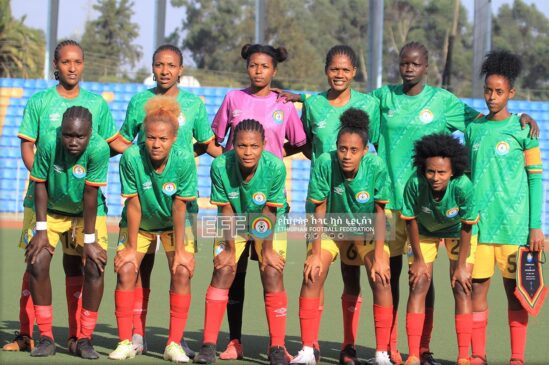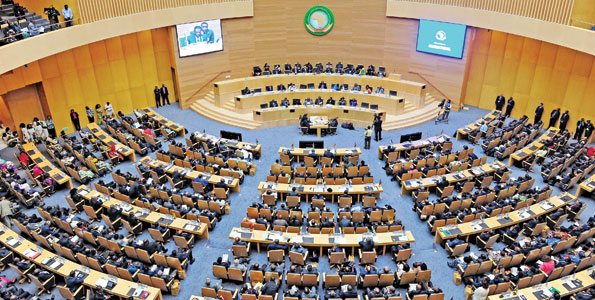Ethiopia hosts Centre workshop

As the 2014 FIFA World Cup in Brazil draws closer, memories are not the only thing that remain of the first-ever World Cup on African soil two years ago in South Africa. For thousands of children in different African countries, the 2010 World Cup has had a real and positive impact on their lives through the Football for Hope Centres.
In November, delegates from all 20 Football for Hope Centres met in the Ethiopian capital of Addis Abeba for the fifth Football for Hope Centre Host Workshop. “This is the first time that all the 20 Host Centre representatives have met for a roundtable workshop to share their experiences in establishing the centres, said Cornelia Genoni, FIFA’s Corporate Social Responsibility (CSR) Programme Manager.
Ian Mills, who is the Programme Manager of the Football for Hope Centres team, explained the project’s place as the official campaign of the 2010 FIFA World Cup. “FIFA wanted to leave a lasting legacy, not only in South Africa, but throughout the continent and 20 Centres for 2010 does just that.”
The South African, who works for streetfootballworld, with whom FIFA has an alliance to implement the 20 Centres for 2010, added that throughout the continent there was a huge need to create facilities which local organisations can use to reach young people and address the challenges they are facing. “Many communities throughout Africa face serious challenges. Problems such as HIV/Aids, violence, unemployment or lack of education occur. The Football for Hope Centres make available a facility to help young people address these issues.”
FIFA provide organisations with start-up finance and then provide the facilities, which consist of a 180 square metre building, as well as a seven-a-side football pitch equipped with solar lighting. The running-costs are funded for three years, during which time the organisations in charge are empowered to raise funds themselves. “The organisations running the centres tell us what their requirements for the building are. For instance, some might want an IT room, while others go for a library. They are then built according to their needs.”
“The centres provide young people with a safe place in which they can learn and address the problems that face them. As these problems are not all the same throughout the continent, the centres have different focuses. South Africa there is a strong focus on HIV/Aids, inRwanda the focus is on conflict resolution. In other areas the focus is on unemployment or on other things. In all centres though, football is integrated into the programmes to reach out to young people.”
Sharing experiences
Delegates at the workshop shared their experiences, identifying the lack of adequate land to build the facilities as one of the major stumbling blocks that needed to be overcome before a centre could be opened. Primrose Dube, Operations Manager of Grassroots Soccer Zimbabwe, told the other delegates that even though they had started the process a year ago, they were still waiting for approval for the land they requested to lease from the Bulawayo City Council. “We expect to finalise the issue of land with the city council in the first week of December. This will allow us to proceed to the construction of the centre.
Other areas covered during the three-day workshop included fundraising strategies, effective techniques of proposal development, and monitoring and evaluation of projects. Victor Emmanuel Sewabana, who is the Esperance Centre manager, which was opened in early October in a school compound with 4,000 students, said that he benefited tremendously from the workshop. “I shared my experiences in the workshop with topics like child protection policies, risk assessment and event management. What I learnt was especially in the areas of code of conduct for those working in the centres and income generation activities.
In the Esperance Centre in the Rwandan capital of Kigali, youngsters have been trained in life skills, entrepreneurship and ICT. The centre has also been involved in teaching English, which will serve youngsters well as the language has grown in importance in the country in recent years.
Seven of the 20 centres (in Ghana, Mali, Kenya, Rwanda, Namibia, Lesotho and South Africa) have been completed and have started operations, while those in Burundi, Cape Verde, Cameroon,Ethiopia, Democratic Republic of Congo, Tanzania, Mozambique, Botswana, Zimbabwe and others inSouth Africa are in various stages of being made operational.
“We are well on track to ensuring that all 20 centres are operational by next year,” says Mills. “This will ensure that the 2010 World Cup leaves a lasting legacy that goes far beyond the memories of thrilling games, spectacular goals and a terrific atmosphere. It will leave a legacy of changing the lives of thousands of youngsters for the better!”
Source: FIFA.com



